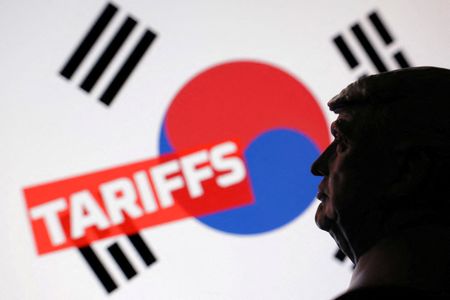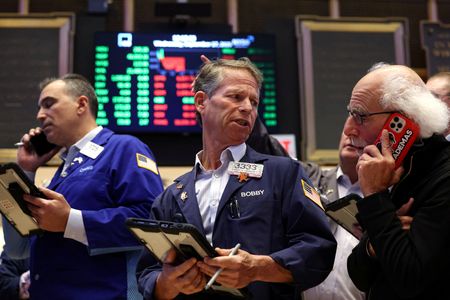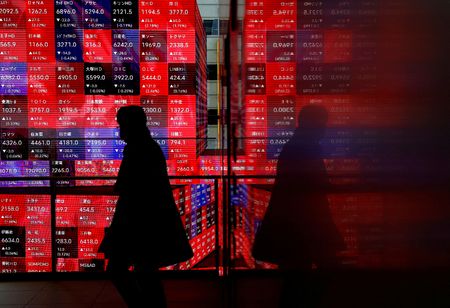By Shariq Khan
NEW YORK (Reuters) -Oil prices settled higher on Tuesday, bouncing off the previous session’s five-month lows, as investors reassessed expectations of a looming glut and sought clarity on the trade dispute between the U.S. and China, the world’s two biggest oil consumers.
Brent crude futures rose 31 cents, or 0.5%, to settle at $61.32 a barrel, while U.S. West Texas Intermediate crude futures for November delivery, which expired on Tuesday’s settlement, closed up 30 cents, or 0.5%, at $57.82.
Both contracts had hit their lowest since early May on Monday, as record U.S. oil production and the decision by the Organization of the Petroleum Exporting Countries and allies to press ahead with planned supply hikes raised expectations of oversupply.
However, relatively low U.S. crude and distillate fuel inventories were helping counter some of the pressure on oil benchmarks, Bjarne Schieldrop, chief commodities analyst at SEB, said.
The U.S.-China trade dispute has also increased anticipation that a slowdown in global economic growth will curb demand for oil. Both sides have, however, made some efforts to downplay the disagreement.
U.S. President Donald Trump, who is set to meet China’s Xi Jinping in South Korea next week, said on Monday he expects to reach a fair trade deal with his counterpart.
ANALYSTS DIVIDED ON FUTURE DIRECTION
The structure of both WTI and Brent futures curves has started to shift to a contango, where prices for immediate supply are lower than for later delivery. That typically indicates that near-term supply is abundant and demand is declining.
Market participants are debating how deep that contango is likely to be.
The International Energy Agency earlier this month forecast that a surplus next year would lead to a strongly upward-sloped futures curve, called super contango. However, that has not emerged so far, UBS analyst Giovanni Staunovo said in a note.
“While supply concerns have increased in recent weeks again, we believe the oil market is oversupplied but not in a glut,” Staunovo noted.
“We expect oil prices to stabilize around current levels,” he said, adding that prices could come under pressure if trade tensions escalate.
A preliminary Reuters poll released on Monday showed that U.S. crude oil stockpiles likely rose last week.
“The reality of stock builds appears to be finally here and prices should head lower to put a deeper contango in the market,” said Scott Shelton, energy specialist at TP ICAP Group.
The U.S. is planning to buy 1 million barrels of crude oil for the Strategic Petroleum Reserve, Bloomberg reported on Tuesday.
(Reporting by Robert Harvey and Seher Dareen in London, Sam Li in Beijing, Ashitha Shivaprasad in Bengaluru; Editing by Barbara Lewis and Lisa Shumaker)










